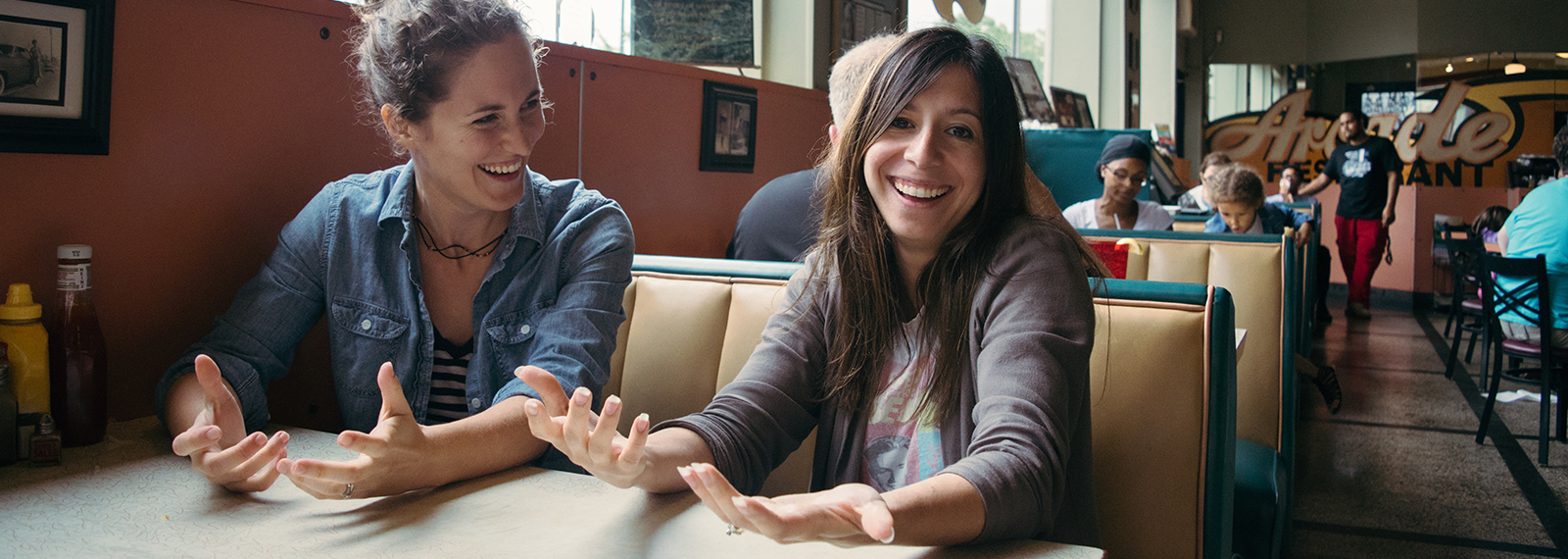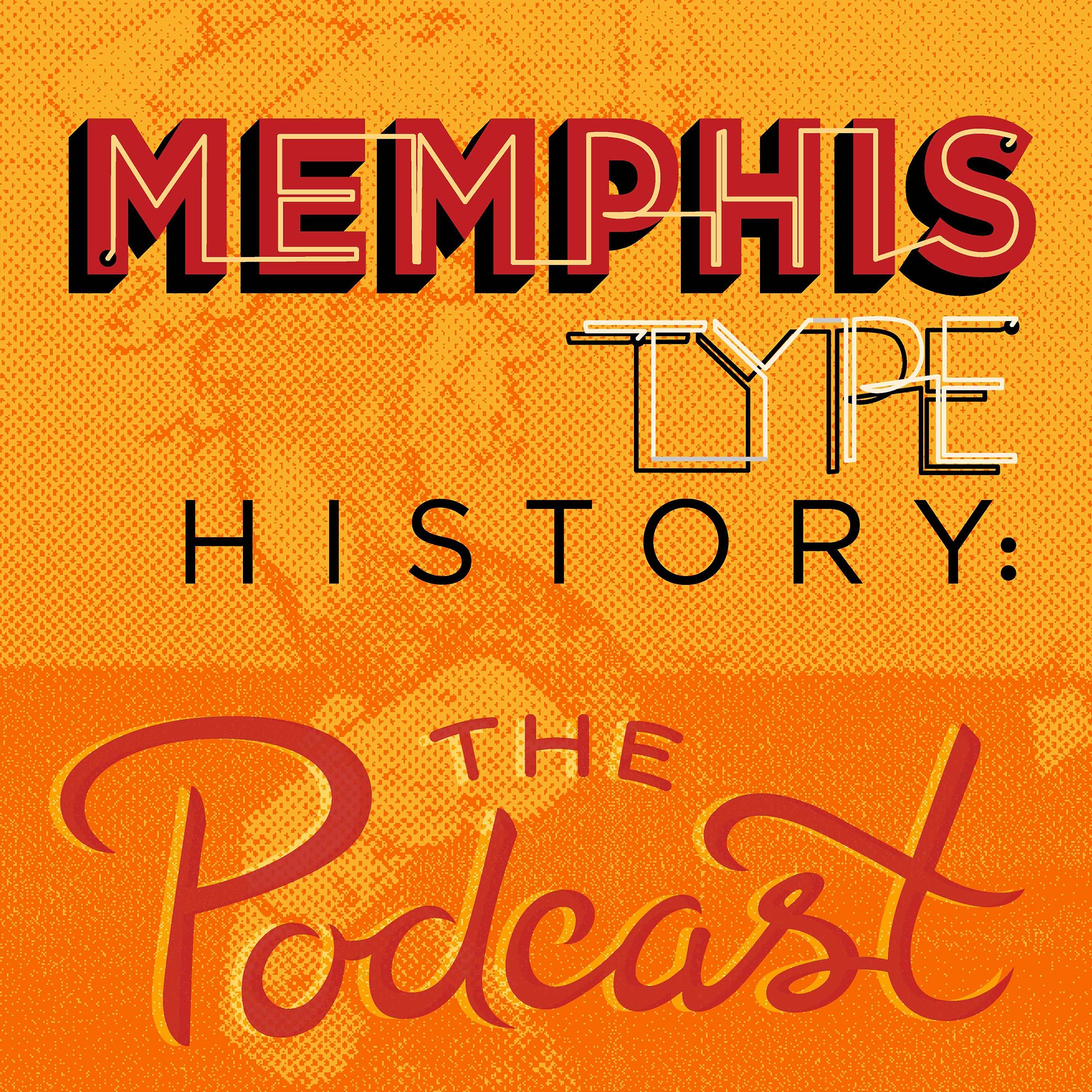Episodes
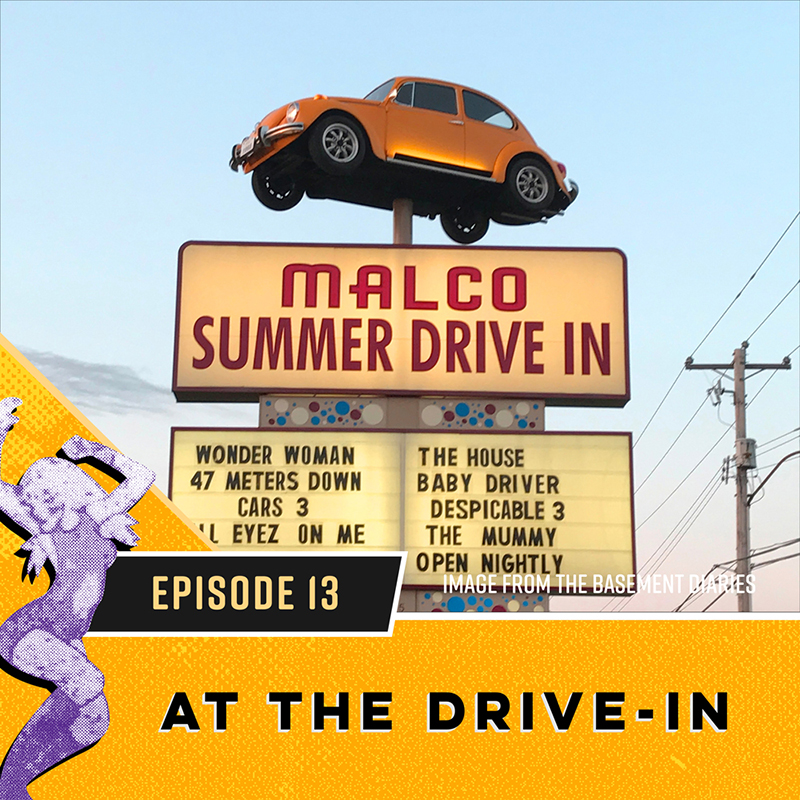
Sunday Aug 20, 2017
At the Drive-In
Sunday Aug 20, 2017
Sunday Aug 20, 2017
In this episode of Memphis Type History: The Podcast, you’ll find out how the drive-in movie theater started, hear Rebecca’s sister tell her childhood memories of the drive in, and answer the question that has been the source of many contentious debates in Memphis for years: which side of the highway was the Summer Avenue Drive in originally located?
Richard Hollingshead starts the Drive-In, of course, for his mom. As a sales manager for his father’s company, Whiz Auto Products, Hollingshead understood the automobile and society’s love for cars. He also understood some people, like his mom, had a hard time finding a comfortable seat in the town’s lavish theater. Thus, he worked on an idea to create a movie watching experience in the comfort of your own car. Mounting a 1928 Kodak projector on the hood of his car, tying sheets to trees, and with his radio, he practiced his clever project in his own driveway. In May of 1933 he received a patent for his concept and opened the first Drive-In Theater on Tuesday, June 6 of the same year in Pennsauken, New Jersey.
GROWING UP AT THE DRIVE-IN
Rebecca's sister actually has some vivid memories of going to the movie theater, especially the drive in where we grew up in South Texas. The whole experience of bringing food, packing into the car, seeing some new and exciting film, was an escape from what could sometimes feel like an otherwise dull and restricting working class lifestyle. It should be noted in the podcast Rebecca's sister says she was born in 1979 which is true even though she tries to sound more like 79 years old to make the memory more genuine. Plus they sound almost exactly alike so hopefully this helps distinguish them.
THE SUMMER AVENUE DRIVE IN GREAT DEBATE
The current drive-in did move into its current location, across the highway to the west after the construction of the highway in 1966. The original drive-in was said to have the largest marquee sign in the South and the second largest car capacity at more than 600.
We also learned the founder of Holiday Inn, Kemmons Wilson, was one of the original owners of the movie theater and he intended for there to be a skating rink directly in front of the screen. In addition, the original theater offered services many of us would love to have access to, especially moms, like warming a bottle of milk for a baby! Although the skating rink may or may not have actually ever been used and several of the other big ideas for the theater were never realized, it was still very popular and entertained crowds for many years. It did close and was eventually demolished before the new Summer Drive-In opened in 1966.
Caitlin and Rebecca went to see a movie at the current Summer Drive-In several years ago. You’ll have to listen to the podcast to get the whole story, though. You’ll also hear about someone who may be living in an apartment above the concession stand.
The Summer Drive-In now remains a popular spot for families, teenagers, and just about anyone who loves movies in Memphis. You can listen to the movie audio through a radio station that tunes in once you drive onto the lot and the sign is characterized by vintage sculptures and a classic Beetle car above the marquee.
For full show notes, visit memphistypehistory.com/drivein
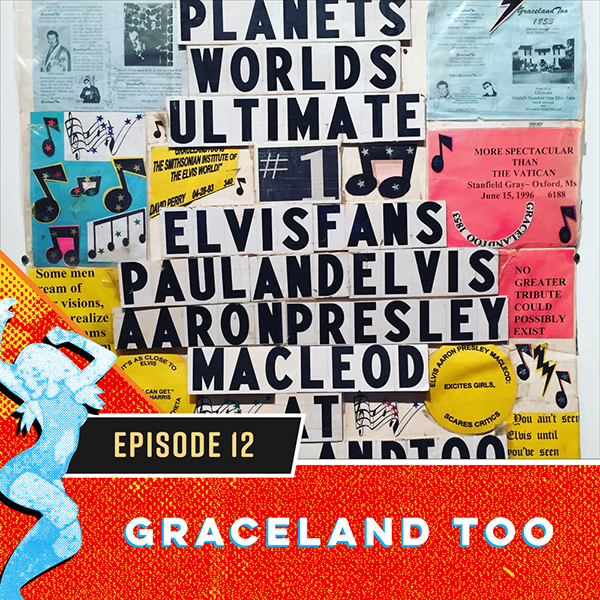
Sunday Aug 13, 2017
Graceland Too: The Place We Regret Not Visiting
Sunday Aug 13, 2017
Sunday Aug 13, 2017
In this episode of Memphis Type History: The Podcast, Rebecca and Caitlin have a treat for all the Elvis fans out there celebrating this week. They talk about Graceland Too, the offbeat museum of Elvis memorabilia you can't visit anymore because of its closing in tragic circumstances. But you can hear all about it from from people who did see it firsthand on Memphis Type History: The Podcast.
Graceland Too is no longer open to the public. However, memories of the eccentric owner of the Elvis memorabilia museum are still spoken of with fondness. Paul MacLeod drove into Holly Springs, Mississippi, in the 1980s dressed like Elvis and in a pink Cadillac. He took up residence in the small town and soon his reputation as an Elvis fan garnered him visitors of his own. He loved Elvis so much his entire home was filled with rare and strange memorabilia. He said to have even named is son Elvis Aaron Presley McLeod. So where did the name come from?
The house itself was just as eccentric as the man who ran it. There was memorabilia covering every wall of the house. It changed colors regularly according to various themes: Blue for Blue Hawaii, Pink for the Cadillac, and Gray for Jailhouse Rock, among others. Unfortunately Paul McLeod was found dead suddenly on his porch in the front of his house from a health issues. Two days earlier he had shot and killed a man at his front door. Although MacLeod was not convicted with anything, people claim the stress of the situation caused his death. The death was sudden and just as suddenly his home and belongings were auctioned off. Rebecca only even experienced any of it at an exhibit at Crosstown Arts which is why she looked for people who could help fill in memories with their firsthand accounts.
The first person interviewed is Darrin Devault. He went to the museum the first time with a friend who was always looking for the opportunity to take good photos. Only box fans cooled the house in the sweltering July heat. Darrin described the house as being at one time a "stately home." At the time of their visit it was painted in the blue.
After that, it was painted "Pepto Bismo Pink. Darrin went to McLeod's funeral. They let everyone at the funeral back to the house for the final tour. Darrin talks about Paul's "photographic memory" and his "wall of fans" for people visited consistently over the years including the Elvis garment you had to wear for your "wall of fans" photo to be displayed in the home. You'll have to listen to the podcast to get the details, though.
Second, we hear from Aimee who was a lifetime member. She took one of those middle-of-the-night visits that were apparently very popular among college students. It was the mid-nineties. Upon arriving she was taken aback by the number of items and its location just off a main city street. She also talks about how it was a much different experience in the middle of the night than during the day. Aimee took the trip when she was relatively new to Memphis and was very curious about the Elvis culture that exists. She describes it as a place you had to see to believe and describes McLeod as every bit of what you hear about when people describe him.
Rebecca also talked to Emily Van Gilder and her boyfriend Evan Daws. Evan was actually a lifetime member and has his picture on that "wall of fans" you read about earlier and is the owner of several Lifetime Member cards. Evan talks about his many adventures at Graceland Too, and shares what he'd have kept if he could have anything from the collection. Emily had her own unique experience there. Listen to the podcast to get all those details.
For full show notes go to memphistypehistory.com/gracelandtoo
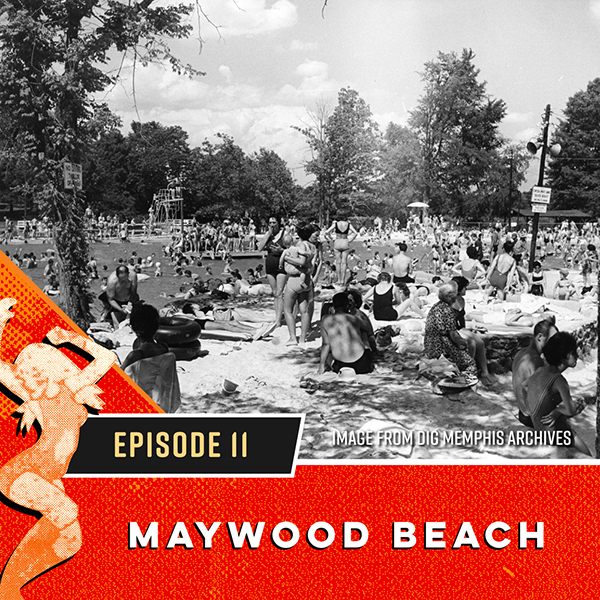
Sunday Aug 06, 2017
Maywood Beach
Sunday Aug 06, 2017
Sunday Aug 06, 2017
In this episode of Memphis Type History: The Podcast, Caitlin tells Rebecca all about a magical place of summer fun in Memphis: Maywood Beach, aka the "beach within reach."
Maurice and Mae Woodson opened Maywood Beach (named after Mae, of course) on July, 4, 1931 at Lake Shahkoka in Olive Branch, MS. A team of mules dug out the lake bed, which was filled with water from an underground artesian water basin.
They trucked in tons and tons of white sand from Destin, FL. Finally, slides and other fun additions over time like picnic tables, barbecue pits, pavilions, a bowling alley, playgrounds, a snack bar, and a tearoom created a full-on beach and a waterpark on the Woodsons' 400 acres.
Commercials for Coppertone, hat contests, and concerts by Elvis Presley, Jerry Lee Lewis, and Johnny Cash (to name a few) quickly ensued. Oh, and yes, there's yet another Elvis connection in this episode!
But then Caitlin has to break the bad news to Rebecca... In 2003, the grounds closed in order to create a planned subdivision and gated retirement community. Then they call Caitlin's mom on Skype to ask her why she never took Caitlin to Maywood when she had the chance.
For full show notes go to memphistypehistory.com/maywood
Friday Aug 04, 2017
Bonus Episode: Goat on Parade
Friday Aug 04, 2017
Friday Aug 04, 2017
Buckle up for a bonus episode! First, listen to Episode 8: Beer-Drinking Goats at Silky O'Sullivan's. Then come back and enjoy this fun little bonus show!
Friday Aug 04, 2017
Bonus Episode: Runaway Goat
Friday Aug 04, 2017
Friday Aug 04, 2017
Buckle up for a bonus episode! First, listen to Episode 8: Beer-Drinking Goats at Silky O'Sullivan's. Then come back and enjoy this fun little bonus show!
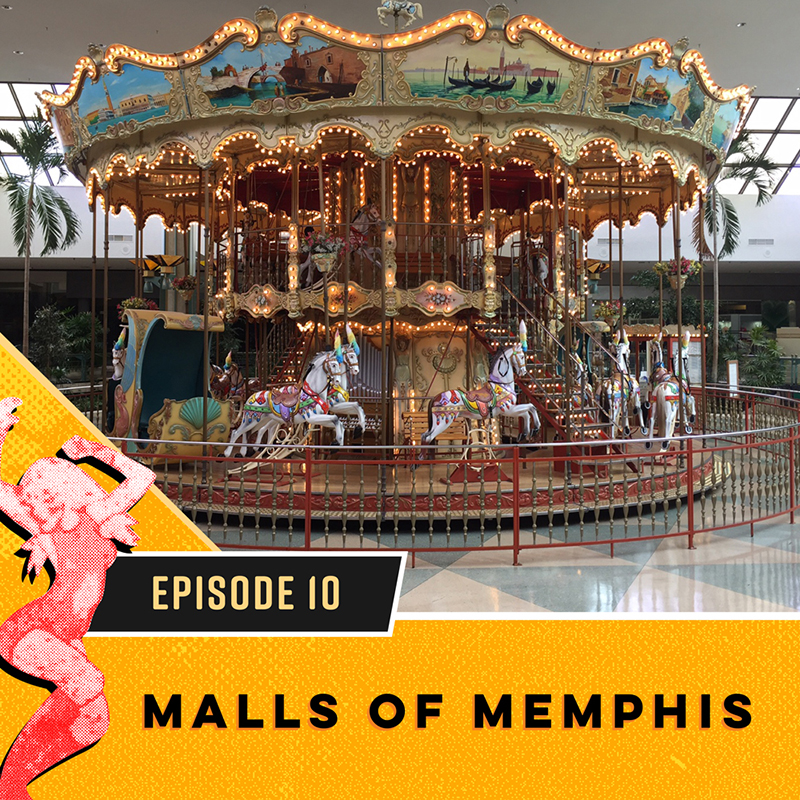
Sunday Jul 30, 2017
Malls of Memphis
Sunday Jul 30, 2017
Sunday Jul 30, 2017
In this episode of Memphis Type History: The Podcast, Caitlin and Rebecca talk about the history of a few malls in Memphis, how they started and what they've become. They also include some hopeful future news.
They talk about the history of malls generally, but also specifically how Memphis malls illustrate the rise and apparent current fall of the mall as an architectural construct in cities across the country.
They talk about where the oldest mall in the history of the world resides. Of course, it would be the motherland of architecture, none other than Italy. It's also an example of a galleria being in contrast to a mall because it makes use of a glass enclosed promenade. It's called Galleria Vittorio Emanuele II.
First up, the Hickory Ridge Mall, which came about in the heyday of indoor mall popularity: the eighties.
Rebecca took her family to visit the what was once one of Memphis' most popular attractions. It's the same place Caitlin's grandmother used to take her to shop at the oh so bougie Goldsmith's department store (Caitlin really just wanted to go to Wet Seal, though). In any case, Rebecca was particularly impressed by the still operating, double-decker carousel.
Unfortunately, the food court promised a lot but didn't seem to have much going on. The mall is now mostly space used by service providers to the now recessed community of Hickory Hill—a nonprofit pharmacy for low-income customers, tax prep services, the school district had a registration office, after school programs, etc. It's really amazing that it is still running at all given the fates of the next two malls and Hickory Ridge got hit by a tornado in 2008.
You can see another perspective from someone who grew up at the Hickory Ridge Mall and recently went back to visit from Michael Butler at his blog one901.com.
Next stop on my tour was the Raleigh Springs Mall—the second mall of Memphis.
Rebecca couldn't go inside because the Raleigh Springs Mall had been scheduled for demolition. It opened in the seventies and was on the forefront of a new phenomenon at the time: movie theaters inside malls. It's something we all associate completely with malls now but in the seventies it was a brand new idea and the Raleigh Springs mall was one of the first.
The Raleigh Springs Mall closed in 2011 and despite efforts to try and use it a new town centre concept to provide community services with a police precinct, library, job training center, etc. the build was demolish in 2017. Despite all of this, when Rebecca drove around the neighborhood, she was really impressed with the homes and surrounding neighborhood. It reminded her of the small Texas town where she grew up.
Then maybe the most tragic tale of them all:
The Mall of Memphis (aka The Mall of Murder)
The Mall of Memphis stormed the Mid-South as the premier marketplace and arrived with much fanfare. It boasted 1.2 million square feet of retail space including an ice skating rink, food court, a fancy ribbon-cutting, indoor concerts, and basically all the things you saw in the movies in the eighties that wished were happening at your childhood mall. Caitlin knows firsthand. She grew up visiting and remembers it being the place with all the cutting-edge stores especially one favorite (admit it, you loved it as a teenager, too) Spencer Gifts.
The mall developed a reputation for being unsafe. After hearing so many people refer to the mall by that reputation even now, many years after its closing, Rebecca looked into some research about exactly where the reputation came from. Rhodes College did a study about the subject comparing the Mall of Memphis to several others: Oak Court, Southland, and Hickory Ridge in regard to several specific areas of comparative data: location, demographics and, competition.
The big takeaways for me were the following:
- Media coverage played a really significant role in the name "Mall of Murder" sticking and by extension the reputation
- Other malls actually had a higher number of crimes per capita (Oak Court) and property crime rates (Hickory Ridge). Note: Rebecca states that Oak Court had higher violent crimes but it was actually property crimes as well as crimes per capita.
- There was a dramatic demographic shift from 1990 to 2000 in which the percentage of white residents nearby dropped precipitously. It's also worth noting that this shift didn't just occur in a racial binary (black/white). There was also a significant increase in new hispanic residents to area surrounding the mall of Memphis.
- The businesses in the Mall of Memphis were almost entirely geared toward "blue collar" shoppers as opposed to shoppers looking for "luxury" brands
For full show notes, go to memphistypehistory.com/malls
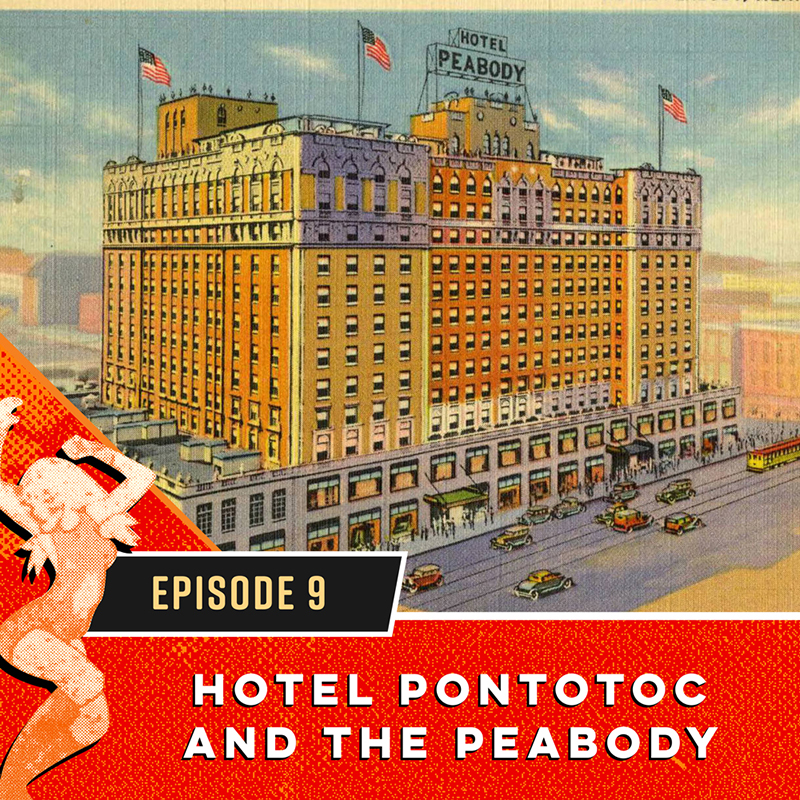
Sunday Jul 23, 2017
Hotel Pontotoc and The Peabody
Sunday Jul 23, 2017
Sunday Jul 23, 2017
In this episode of Memphis Type History: The Podcast, we tell each other the history behind a favorite historical Memphis hotel. Rebecca dives right into how the Peabody Hotel came to be, while Caitlin shares about the lesser known Hotel Pontotoc.
The very first Peabody Hotel opened in 1869 at the corner of Main and Monroe at a cost of $60,000. Rates were $4 a night and included a meal in the first class dining room. Rebecca talks about the origin of the famous Peabody ducks and how they got tamed by the Ringling Brothers' circus animal trainer... who then became the first Duckmaster!
The current Peabody is a beautiful relic of historic architecture in Memphis... and many celebrities have stayed there (like Michael Jackson, for starters). The ducks stay in their duck palace up on the roof.
The Pontotoc Hotel is a European-style hotel constructed of rusticated concrete block, located at 69 Pontotoc in downtown Memphis. Unlike the swankier Peabody, the Pontotoc catered to railway and riverboat travelers... but there were Turkish baths available just to keep things classy. And just in case you're not sure how a Turkish bath works, Caitlin happily gives you her first-hand account! By the 1920's, though, the Pontotoc was one of Memphis' most well-known (and most elegant) brothels.
Later on a Greek family owned the establishment and Caitlin talks about the wine they made and the famous vaudeville performers and artists who stayed at the Pontotoc. We try to dispel yet another ghost story and tell you how the Pontotoc survived some wild years as a nightclub known as The Cellar. Caitlin wraps up by announcing who owns the Pontotoc now, the ways they support downtown Memphis, and their famous Halloween parties.
For full show notes go to memphistypehistory.com/hotels1

Sunday Jul 16, 2017
Beer-Drinking Goats at Silky O'Sullivan's
Sunday Jul 16, 2017
Sunday Jul 16, 2017
In this episode of Memphis Type History: The Podcast, Rebecca tells Caitlin why there are goats on Beale Street and how they've been known to drink beer. Silky O'Sullivan's features dueling pianos and an outdoor patio with two wonderful female goats.
Joellyn Sullivan joins on this episode to tell us the story of this famous Beale Street Irish pub. Her late husband Thomas Daniel Sullivan, got the nickname "Silky's" from a racehorse. He used the name when he first opened a bar on Overton Square... and then added an "O" to the Beale Street location in Irish naming tradition because it was the "son of" his first bar! It was one of the first places opened when Beale Street was getting revitalized.
Joellyn tells us where the goats actually came from... which involves a famous Irish festival with a goat king and everything. But the journey to have these fun drinking partners on Beale was full of the best kind of Memphis drama like goat switcheroos and a Peabody ducks appearance...
We learn about Maynard the one-horned goat that brought the Grizzlies good luck. Joellyn shares the secret of how Memphis barbecue got to Ireland, Estonia, Sweden, Bangkok, Jamaica, the Bahamas, and Cuba (we're sure they're all extremely thankful).
Our very heartfelt thanks goes out to Joellyn Sullivan for making this episode possible.
Lastly, if you think you know what's inside a Diver, let us know! You can contribute to our Diver fund at patreon.com/memphistypehistory
For full show notes, visit memphistypehistory.com/goats

Sunday Jul 09, 2017
Get to Know Us: Q&A with Caitlin and Rebecca
Sunday Jul 09, 2017
Sunday Jul 09, 2017
In this episode, Caitlin and Rebecca ask each other questions about all sorts of random stuff. We learn how we got to Memphis and how one of us ended up in Shanghai. You'll find out what our alternate careers might be and who Rebecca would want as her first guest if she had a talk show.
For full show notes go to memphistypehistory.com/questions
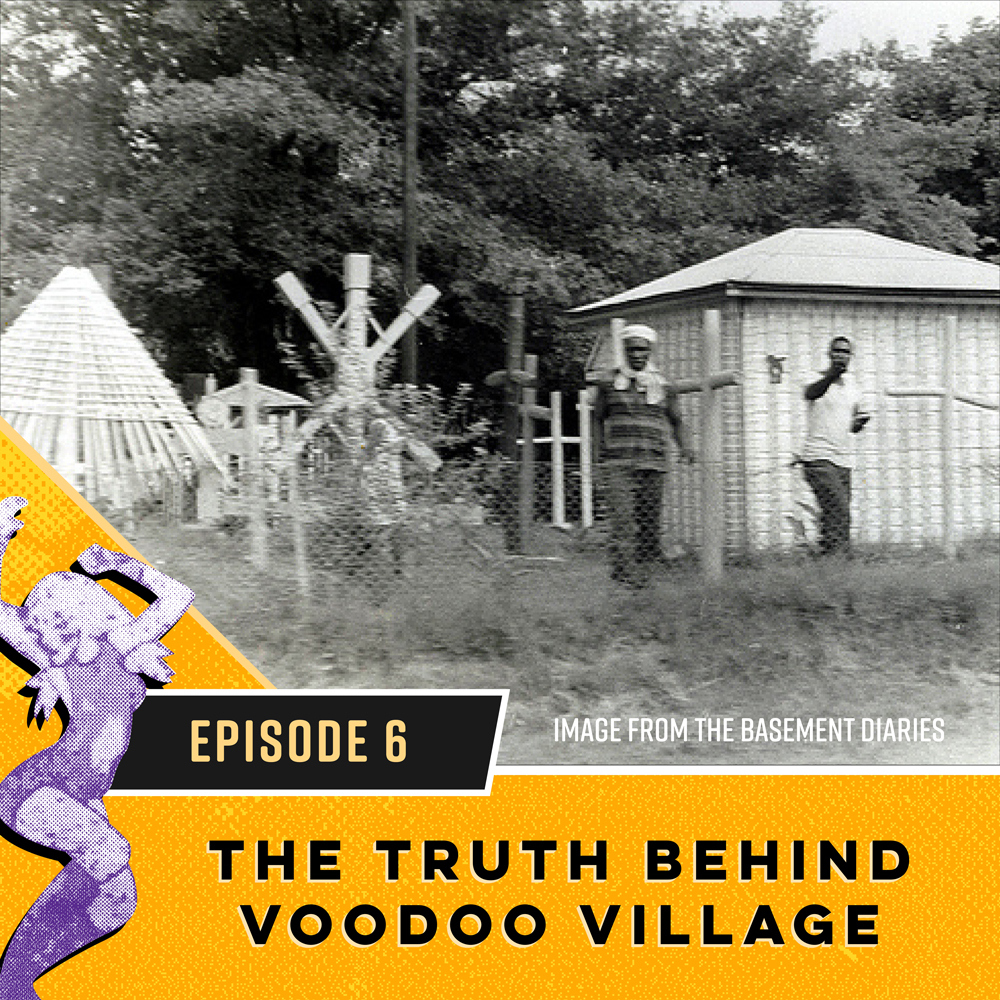
Sunday Jul 02, 2017
The Truth Behind Voodoo Village
Sunday Jul 02, 2017
Sunday Jul 02, 2017
In this episode of Memphis Type History: The Podcast, Caitlin tells Rebecca the truth (or as much as she can uncover) about one of Memphis' most famous "haunted" locations: Voodoo Village. Voodoo Village has truly become its own urban legend. So in this episode, they hope to dispel some of the rumor and lore and tell you what exactly is behind those locked gates.
There are many stories of people having spooky encounters at Voodoo Village. But the reality behind this family compound filled with strange buildings and unusual art is actually more fascinating to us than the legend of it all.
First, let’s set the record straight on what Voodoo Village is. The actual name for the place is St. Paul's Holiness Temple. Washington "Doc" Harris, a self-ordained Baptist minister from central Mississippi, built the temple there and lived on the land with his family. The colorfully painted shotgun houses are surrounded by roughly 1,500 pieces of mysterious sculptures and surreal machines made out of painted wood.
We discuss the misunderstood relationship between the temple and voodoo, how a lot of what goes on in the compound is typical of African American vernacular worship in the Deep South, and how masonic symbols play their own interesting role in the story. We wrap up with how you might have interacted with a resident of Voodoo Village without even realizing it!
For full show notes go to memphistypehistory.com/temple
